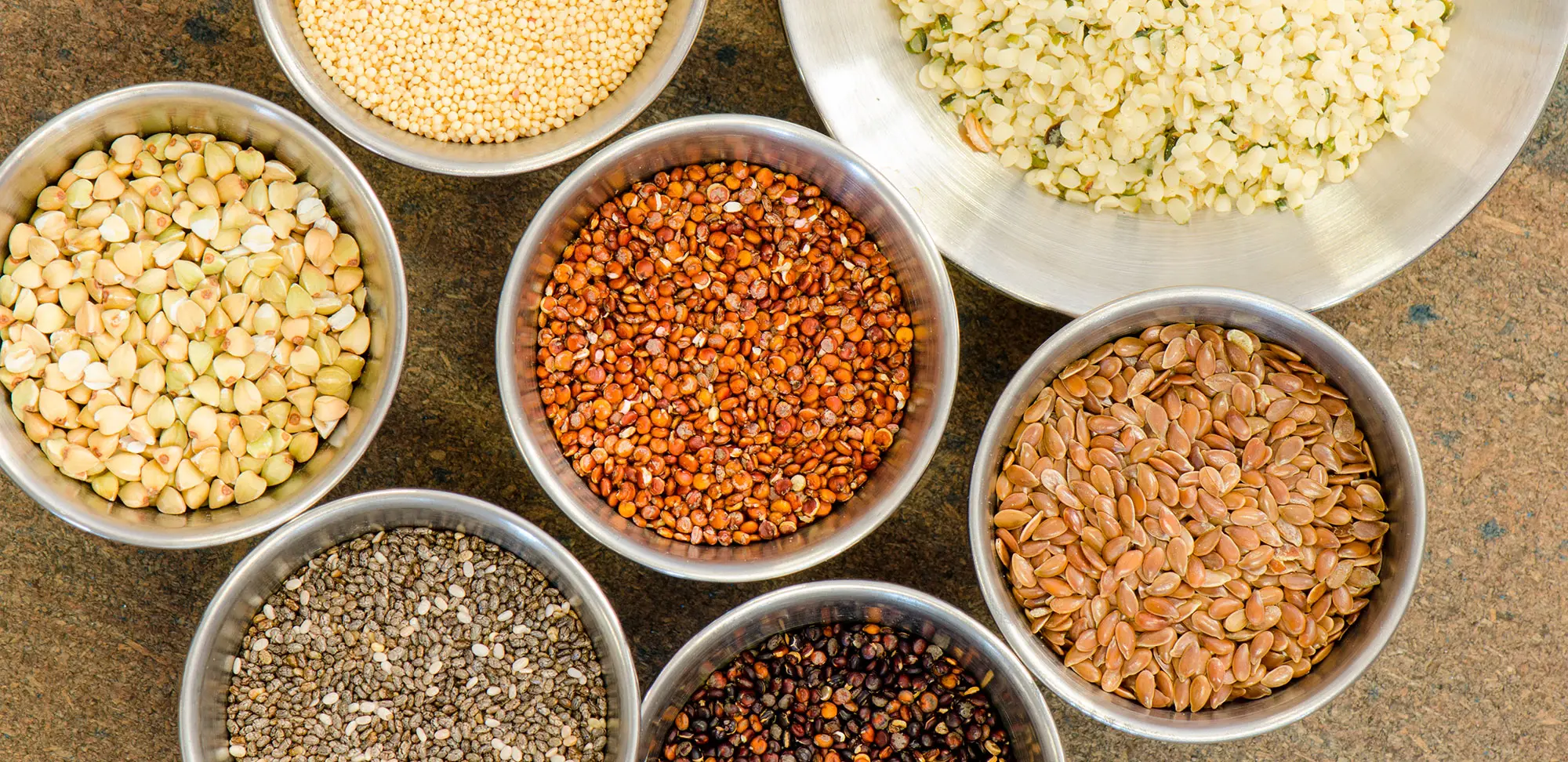Remember the days when quinoa was the new kid on the block? Marketed as a superfood and ancient grain (even though it is technically a seed), it was higher in protein, fibre and other nutrients than simple grains like pasta and bread. Quinoa remains popular, but it’s now just one of many ancient grains readily available that also offer excellent nutrition profiles and intriguing tastes.
Some ancient grains to try include farro, sorghum, teff, freekeh, spelt and kamut. Like quinoa, they’ve been around for centuries and provide a broad range of nutritional benefits that many modern grains can’t match.
Largely unchanged, these grains are typically eaten in their whole form, or in some cases minimally processed, and are rich in fibre, essential minerals and vitamins. Most of these grains are more nutrient-dense than popular processed grains, and their toothsome texture gives a more satisfying eating experience than plain pasta or white rice. They typically have a lower glycemic index than refined grains, making them helpful in stabilizing blood sugar and reducing the risk of type 2 diabetes. Rich in antioxidants, they help lower the risk of many chronic diseases, including some cancers and heart disease. Many ancient grains are a great source of plant-based protein, too, making them an option for vegetarians.
Farro: Also known as emmer, farro has a nutty and slightly sweet taste, making it a good contrast to slightly bitter foods such as kale. One cup cooked farro has about 255 calories, 12 grams of protein, 10 grams of fibre, plus iron and B vitamins. Add it to soups, stews, salads or almost any dish where buckwheat or quinoa is called for. It’s a smart nutritional stand-in for a bed of rice when serving stir-fries. Farro comes in whole grain, semi-pearled or pearled – check the label. Pearled farro has some of its bran removed, and while it’s less nutritious, it’s faster to cook. Many people find semi-pearled their go-to option.
Freekeh: Emerging in the Middle East about 2,000 years ago, freekeh is a good source of manganese, magnesium and iron. One cup cooked freekeh has about 250 calories, 9 grams of protein and 11 grams of fibre. It’s crunchy and nutty tasting, so it’s good in salads, pilafs, tacos and soups. Mix it with fresh veggies and a flavourful vinaigrette for a yummy grain salad.
Kamut: Also called Khorasan wheat, kamut is rich in protein, fibre, magnesium, zinc and is an excellent source of selenium, a mineral that promotes a healthy immune system. One cup of cooked kamut has about 230 calories, 10 grams of protein and 8 grams of fibre. It’s a nutritional alternative to wheat flour and can be used to make bread, cookies, muffins and more. Cooked kamut works as a high-protein, high-fibre cereal and can be tossed into salads, stews and soups. It’s a healthy substitute for pasta or white rice or as a base for vegetable stir-fries and pasta sauces.
Read labels: When shopping, always read labels carefully. Some ancient grains may be refined and not as nutrient-dense as the unprocessed grains. The ancient grain should be the first item on the ingredient-list label, and you should also look for the words “whole grain.”
Not gluten-free: Most ancient grains contain gluten, so they’re not suitable for people with celiac disease or non-celiac gluten sensitivity. Again, read labels carefully.
Satisfying seed: Despite being a seed, quinoa is considered a whole grain. It’s called a pseudocereal, coming from a plant that produces seeds similar to grains and eaten in virtually the same way. The good news: These seeds most commonly are gluten-free.
Cooking: Typically, grains will be cooked in water (as you do with pasta) and the time will depend on the grain. Look for the cooking time on the package.
There are infinite ways to enjoy ancient grains and seeds. An easy start: Use as a healthier substitute for pasta and white rice. Make a trendy grain bowl using one of the ancient grains as a base or mixed with brown rice. Toss cooked bulgur with ground beef or chicken. Add farro or barley to soups, an easy trick to improve the nutritional profile of canned soup.
Looking for tasty recipes to incorporate ancient grains into rotation?
“Ancient Grains for Modern Meals is a delicious and accessible way to invite these nourishing grains into our kitchens and onto our tables. Maria Speck is the award-winning author who takes her recipe inspiration from the Mediterranean, stirring in easy cooking methods, time-saving tips and nutrition information.”
—Elizabeth Baird, Renaissance food editor











